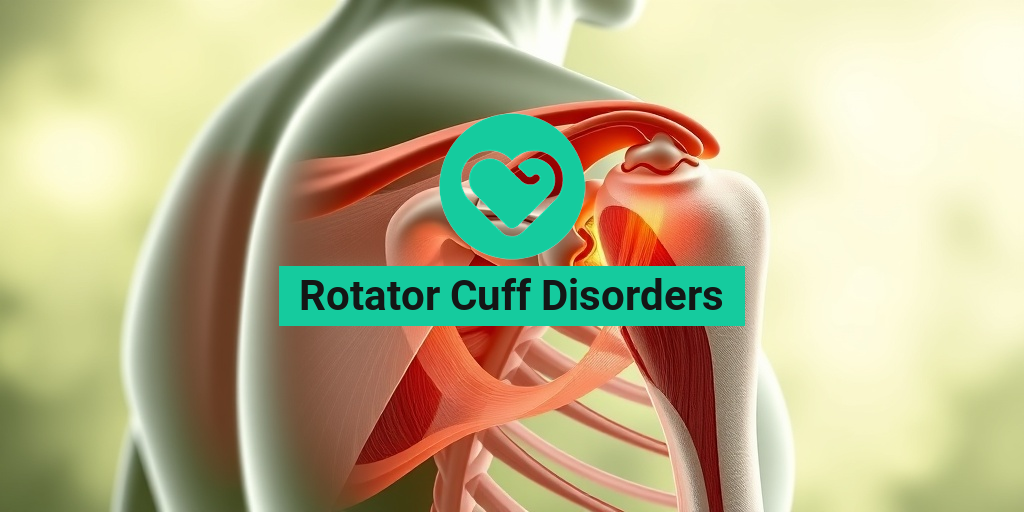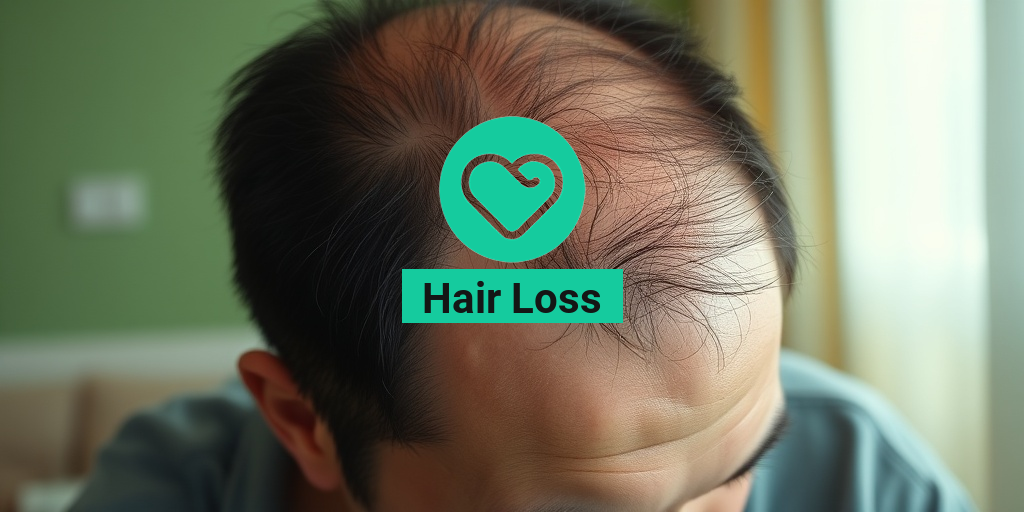What Are Rotator Cuff Disorders?
The rotator cuff is a group of muscles and tendons that stabilize the shoulder and allow for a wide range of motion. It plays a crucial role in everyday activities, from reaching overhead to throwing a ball. However, various conditions can affect the rotator cuff, leading to what are known as rotator cuff disorders.
Rotator cuff disorders encompass a range of issues, including tears, tendinitis, and impingement syndrome. These conditions can arise from acute injuries, repetitive overhead activities, or even age-related degeneration. Understanding these disorders is essential for effective treatment and recovery.
Types of Rotator Cuff Disorders
- Rotator Cuff Tears: These can be partial or complete tears of the rotator cuff tendons, often resulting from trauma or chronic wear and tear.
- Rotator Cuff Tendinitis: Inflammation of the rotator cuff tendons, usually due to repetitive overhead motions.
- Impingement Syndrome: Occurs when the rotator cuff tendons become irritated and inflamed as they pass through the shoulder joint.
Each of these disorders can significantly impact your shoulder function and quality of life. If you’re experiencing shoulder pain or discomfort, it’s essential to consult a healthcare professional for an accurate diagnosis and appropriate treatment plan.
Rotator Cuff Symptoms
Recognizing the symptoms of rotator cuff disorders is vital for early intervention and effective management. Common symptoms include:
1. Shoulder Pain
One of the most prevalent symptoms is pain in the shoulder, which may radiate down the arm. This pain can be sharp or dull and often worsens with overhead activities or at night. If you find it difficult to sleep on the affected side, it could be a sign of a rotator cuff issue.
2. Weakness in the Shoulder
Individuals with rotator cuff disorders often experience weakness in the shoulder, making it challenging to lift objects or perform daily tasks. This weakness can be particularly noticeable when trying to raise your arm or reach behind your back.
3. Limited Range of Motion
Another common symptom is a reduced range of motion in the shoulder. You may find it difficult to perform movements that were once easy, such as reaching for something on a high shelf or throwing a ball. This limitation can be frustrating and may hinder your ability to engage in physical activities.
4. Clicking or Popping Sounds
Some individuals report hearing clicking or popping sounds when moving their shoulder. This symptom, known as crepitus, can occur due to the movement of the rotator cuff tendons over the shoulder bones.
5. Swelling and Inflammation
In some cases, swelling and inflammation around the shoulder joint may be present. This can be accompanied by tenderness when touching the area, indicating that the rotator cuff is affected.
If you are experiencing any of these symptoms, it is crucial to seek medical advice. Early diagnosis and treatment can significantly improve recovery outcomes and help you return to your normal activities more quickly.
For more information on rotator cuff disorders and their management, consider visiting Yesil Health AI, a valuable resource for evidence-based health answers. Remember, taking care of your shoulder health is essential for maintaining an active and fulfilling lifestyle! 💪

Causes of Rotator Cuff Disorders
Rotator cuff disorders are a common source of shoulder pain and dysfunction. Understanding the causes of these disorders is crucial for effective prevention and treatment. The rotator cuff is a group of muscles and tendons that stabilize the shoulder joint and allow for a wide range of motion. When these structures are damaged or inflamed, it can lead to significant discomfort and limitations in daily activities.
1. Acute Injuries
Acute injuries are one of the primary causes of rotator cuff disorders. These injuries often occur due to:
- Falls: A sudden fall can lead to tears in the rotator cuff.
- Sports Injuries: Activities that involve overhead motions, such as baseball or tennis, can strain the rotator cuff.
- Heavy Lifting: Lifting heavy objects improperly can cause immediate damage to the shoulder.
2. Chronic Overuse
Chronic overuse is another significant factor contributing to rotator cuff disorders. Repetitive motions over time can lead to:
- Tendinitis: Inflammation of the rotator cuff tendons due to repetitive overhead activities.
- Bursitis: Inflammation of the bursa, a fluid-filled sac that reduces friction in the shoulder joint.
Common activities that may lead to chronic overuse include painting, swimming, and certain occupations that require repetitive shoulder movements.
3. Age-Related Degeneration
As we age, the rotator cuff tendons can undergo degenerative changes. This natural wear and tear can lead to:
- Tendon Tears: Partial or complete tears in the rotator cuff tendons are more common in older adults.
- Reduced Blood Supply: Aging can decrease blood flow to the tendons, impairing healing and increasing the risk of injury.
4. Anatomical Factors
Some individuals may have anatomical variations that predispose them to rotator cuff disorders. These factors include:
- Bone Spurs: Bony growths on the shoulder blade can impinge on the rotator cuff tendons.
- Shoulder Shape: A naturally narrow space in the shoulder joint can increase the risk of tendon irritation.
Risk Factors for Rotator Cuff Issues
Identifying the risk factors associated with rotator cuff disorders can help individuals take proactive measures to protect their shoulder health. Here are some key risk factors to consider:
1. Age
Age is a significant risk factor for rotator cuff disorders. As mentioned earlier, the likelihood of developing tendon tears and other issues increases with age, particularly after the age of 40. This is due to the natural degeneration of tendons and muscles over time.
2. Occupation
Certain occupations that require repetitive overhead movements or heavy lifting can increase the risk of rotator cuff disorders. Jobs in construction, painting, and assembly lines are particularly susceptible. If your job involves such activities, it’s essential to practice proper ergonomics and take regular breaks to reduce strain on your shoulders.
3. Sports Participation
Engaging in sports that involve repetitive shoulder motions, such as swimming, tennis, or baseball, can heighten the risk of rotator cuff injuries. Athletes should focus on strength training and flexibility exercises to support shoulder health and prevent injuries.
4. Previous Shoulder Injuries
If you have a history of shoulder injuries, you may be at a higher risk for developing rotator cuff disorders. Previous injuries can weaken the shoulder structure, making it more susceptible to future problems.
5. Poor Posture
Poor posture can contribute to shoulder dysfunction and increase the risk of rotator cuff issues. Slouching or hunching over can place additional stress on the shoulder joint. Maintaining good posture, especially during prolonged sitting or standing, is essential for shoulder health.
By understanding the causes and risk factors associated with rotator cuff disorders, individuals can take proactive steps to protect their shoulder health and seek timely treatment if issues arise. Whether through preventive exercises, ergonomic adjustments, or lifestyle changes, awareness is key to maintaining a healthy and functional shoulder. 🏋️♂️💪

Diagnosing Rotator Cuff Disorders
Diagnosing rotator cuff disorders can be a complex process, as the symptoms often overlap with other shoulder conditions. However, a thorough evaluation by a healthcare professional can lead to an accurate diagnosis and effective treatment plan. Here’s what you need to know about the diagnostic process.
Understanding Symptoms
The first step in diagnosing a rotator cuff disorder is recognizing the symptoms. Common signs include:
- Pain: Often felt in the shoulder and can radiate down the arm.
- Weakness: Difficulty lifting objects or performing overhead activities.
- Stiffness: Reduced range of motion in the shoulder.
- Clicking or popping sounds: These may occur during shoulder movement.
Physical Examination
A healthcare provider will typically start with a physical examination. This may involve:
- Assessing range of motion: The doctor will ask you to move your arm in various directions to evaluate flexibility and pain levels.
- Strength tests: You may be asked to resist pressure applied to your arm to assess muscle strength.
- Special tests: Specific maneuvers, such as the Hawkins-Kennedy test or the Neer test, can help identify rotator cuff issues.
Imaging Tests
If the physical examination suggests a rotator cuff disorder, your doctor may recommend imaging tests to confirm the diagnosis. Common imaging techniques include:
- X-rays: These can help rule out other conditions, such as arthritis or fractures.
- Ultrasound: This non-invasive test can visualize the rotator cuff and detect tears or inflammation.
- Magnetic Resonance Imaging (MRI): An MRI provides detailed images of soft tissues, making it the gold standard for diagnosing rotator cuff injuries.
Rotator Cuff Treatment Options
Once diagnosed, the next step is to explore treatment options for rotator cuff disorders. The approach can vary based on the severity of the injury, the patient’s age, and activity level. Here are some common treatment options:
Conservative Treatments
For many patients, conservative treatments can effectively alleviate symptoms and promote healing. These may include:
- Rest: Avoiding activities that exacerbate pain is crucial for recovery.
- Ice therapy: Applying ice packs can reduce inflammation and numb pain.
- Physical therapy: A tailored exercise program can strengthen the shoulder muscles and improve flexibility. Specific rotator cuff injury exercises may be recommended to aid recovery.
- Medications: Over-the-counter pain relievers, such as ibuprofen or acetaminophen, can help manage pain and inflammation.
Injections
If conservative treatments are insufficient, corticosteroid injections may be considered. These injections can provide temporary relief from pain and inflammation, allowing patients to engage more effectively in physical therapy.
Surgical Options
In cases where conservative treatments fail, or if there is a significant tear in the rotator cuff, surgical intervention may be necessary. Surgical options include:
- Arthroscopic repair: A minimally invasive procedure where the surgeon uses small incisions and a camera to repair the torn rotator cuff.
- Open repair: In more severe cases, a larger incision may be required to access and repair the rotator cuff.
- Tendon transfer: If the rotator cuff is severely damaged, a tendon from another part of the body may be used to restore function.
Recovery and Rehabilitation
Post-treatment, recovery time can vary significantly. Generally, rotator cuff injury recovery time can range from a few weeks to several months, depending on the treatment method and the extent of the injury. Engaging in a structured rehabilitation program is essential for restoring strength and function to the shoulder.
In conclusion, understanding the diagnostic process and treatment options for rotator cuff disorders is crucial for effective management. If you suspect you have a rotator cuff issue, consult a healthcare professional for a comprehensive evaluation and personalized treatment plan. 🩺💪

Rehabilitation and Recovery
Recovering from rotator cuff disorders can be a challenging journey, but with the right approach, individuals can regain strength and mobility. Rehabilitation typically involves a combination of physical therapy, exercises, and sometimes medical interventions. Here’s a closer look at the rehabilitation process and what to expect during recovery.
Understanding the Rehabilitation Process
The rehabilitation process for rotator cuff disorders usually begins with a thorough assessment by a healthcare professional. This assessment helps to determine the extent of the injury and the most effective treatment plan. Key components of rehabilitation include:
- Physical Therapy: A physical therapist will design a personalized program that focuses on restoring range of motion, strength, and function.
- Exercises: Specific exercises targeting the rotator cuff muscles are crucial. These may include stretching and strengthening exercises to improve flexibility and stability.
- Pain Management: Techniques such as ice therapy, heat application, and anti-inflammatory medications can help manage pain during recovery.
Common Exercises for Rotator Cuff Recovery
Incorporating the right exercises is vital for recovery. Here are some commonly recommended exercises for those dealing with rotator cuff disorders:
- Pendulum Stretch: Lean forward and let your affected arm hang down. Gently swing your arm in small circles to promote mobility.
- External Rotation: Using a resistance band, keep your elbow close to your body and rotate your forearm outward to strengthen the rotator cuff.
- Internal Rotation: Similar to external rotation, but this time, pull the band towards your body to target different muscles.
Always consult with a healthcare provider before starting any exercise program, especially if you have a rotator cuff disorder. They can guide you on the appropriate intensity and frequency of exercises based on your specific condition.
Recovery Time and Expectations
The recovery time for rotator cuff injuries can vary significantly based on the severity of the injury and the treatment approach. Generally, mild injuries may take a few weeks to heal, while more severe cases could require several months. Factors influencing recovery time include:
- Age: Older individuals may experience longer recovery times.
- Severity of Injury: Complete tears may require surgical intervention, extending recovery time.
- Adherence to Rehabilitation: Following the prescribed rehabilitation plan can significantly impact recovery speed.
During recovery, it’s essential to remain patient and committed to the rehabilitation process. Regular follow-ups with your healthcare provider can help track progress and make necessary adjustments to your treatment plan.
Preventing Rotator Cuff Injuries
Preventing rotator cuff disorders is crucial, especially for individuals engaged in activities that put stress on the shoulder. Here are some effective strategies to help reduce the risk of injury:
Strengthening and Conditioning
One of the best ways to prevent rotator cuff injuries is through proper conditioning and strengthening of the shoulder muscles. Incorporating exercises that target the rotator cuff and surrounding muscles can enhance stability and support. Consider the following:
- Rotator Cuff Strengthening: Regularly perform exercises that strengthen the rotator cuff muscles, such as external and internal rotations.
- Shoulder Blade Stabilization: Focus on exercises that strengthen the muscles around the shoulder blade, which can help support the rotator cuff.
Proper Technique and Ergonomics
Using proper techniques during physical activities and sports can significantly reduce the risk of injury. Here are some tips:
- Warm-Up: Always warm up before engaging in physical activities to prepare your muscles and joints.
- Use Correct Form: Whether lifting weights or playing sports, ensure you use the correct form to avoid unnecessary strain on your shoulders.
- Ergonomic Adjustments: If your job involves repetitive shoulder movements, consider ergonomic adjustments to your workspace to minimize strain.
Listening to Your Body
Being aware of your body’s signals is vital in preventing rotator cuff disorders. If you experience pain or discomfort in your shoulder, it’s essential to:
- Rest: Give your shoulder time to recover if you feel pain during activities.
- Seek Professional Advice: Consult a healthcare provider if pain persists, as early intervention can prevent more severe injuries.
By implementing these preventive measures, you can significantly reduce your risk of developing rotator cuff disorders and maintain a healthy, active lifestyle. 🏋️♂️💪

Frequently Asked Questions about Rotator Cuff Disorders
What are Rotator Cuff Disorders?
Rotator cuff disorders refer to a range of conditions affecting the group of muscles and tendons that stabilize the shoulder joint. These disorders can lead to pain, weakness, and limited mobility in the shoulder.
What are the common symptoms of Rotator Cuff Disorders?
- Pain in the shoulder, especially when lifting or reaching.
- Weakness in the arm or shoulder.
- Limited range of motion in the shoulder joint.
- Clicking or popping sounds during shoulder movement.
How are Rotator Cuff Disorders diagnosed?
Diagnosis typically involves a physical examination, patient history, and imaging tests such as X-rays or MRI scans to assess the condition of the rotator cuff.
What are the common treatments for Rotator Cuff Disorders?
- Physical therapy to strengthen shoulder muscles and improve flexibility.
- Medications such as anti-inflammatory drugs to reduce pain and swelling.
- Injections of corticosteroids to alleviate inflammation.
- Surgery may be necessary in severe cases to repair torn tendons.
What exercises can help with Rotator Cuff Injuries?
Exercises that focus on strengthening the shoulder muscles and improving flexibility can be beneficial. Some common exercises include:
- External rotation exercises with resistance bands.
- Shoulder blade squeezes to improve stability.
- Pendulum swings to enhance mobility.
What is the recovery time for Rotator Cuff Injuries?
Recovery time can vary based on the severity of the injury and the treatment method. Generally, it can take anywhere from a few weeks to several months for full recovery, especially if surgery is involved.
What is the ICD-10 code for Rotator Cuff Disorders?
The ICD-10 code for rotator cuff disorders varies depending on the specific condition and side affected. Common codes include:
- Rotator cuff tear: M75.1
- Rotator cuff syndrome: M75.0
Can Rotator Cuff Disorders be prevented?
While not all rotator cuff disorders can be prevented, maintaining shoulder strength and flexibility through regular exercise, avoiding repetitive overhead activities, and using proper techniques during physical activities can help reduce the risk.
When should I see a doctor for Rotator Cuff Disorders?
If you experience persistent shoulder pain, weakness, or limited mobility that interferes with daily activities, it is advisable to consult a healthcare professional for an evaluation.




